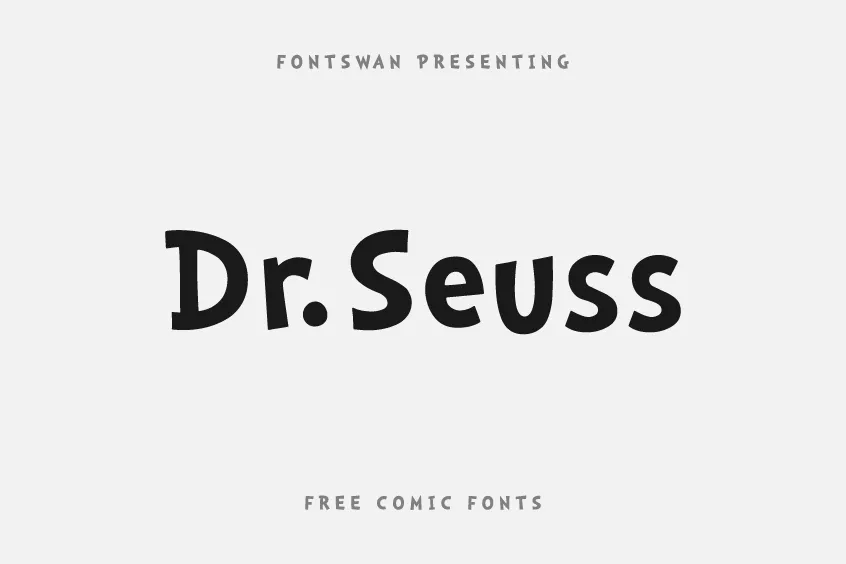Looking for a free Dr Seuss font and curious about the typography behind his iconic works? Dr. Seuss, the cherished author and illustrator of children’s books, had a unique writing and drawing style that captivated millions of readers. His whimsical characters, rhyming verses, and vibrant illustrations are instantly recognizable and unforgettable. But have you ever wondered about the fonts he used in his books? What are their names, origins, and characteristics? In this article, we’ll delve into some of the fonts used in Dr. Seuss’s works, including The Cat in the Hat, Thing 1 and Thing 2, The Lorax, Horton Hears a Who, and more, to inspire your next project.
What is the Name of Dr Seuss Font?
The Dr Seuss font utilized for his book covers is called “DrSeuss Bold,” a proprietary font and not made available for public use. However, many designers have created fonts that emulate Dr Seuss’s handwriting style, as a means of paying homage to his works. These fonts, though inspired by his unique style, are not officially endorsed or sanctioned by Theodor Seuss Geisel or his heirs.
List of Similar Styles to Dr Seuss Fonts
Dr Seuss fonts are whimsical, quirky, and fun fonts that resemble the style of the famous children’s book author and illustrator, Dr Seuss. Dr Seuss fonts are often used for creative projects, such as invitations, posters, flyers, logos, and more. If you are looking for some similar styles to Dr Seuss fonts, here are some options you may want to consider:
1. Grinched 2.0
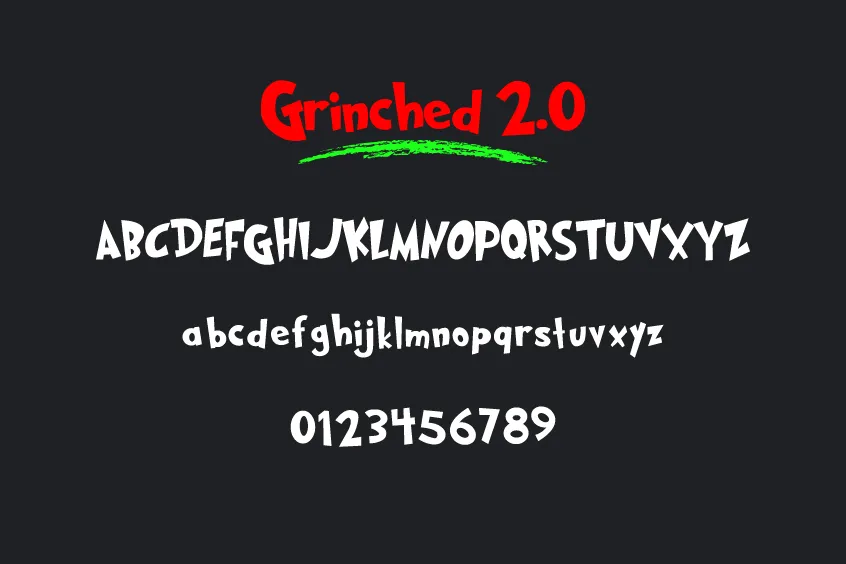
Grinched 2.0, developed by Sharkshock, is a contemporary reworking of the original Grinched font. The updated version features a majority of the uppercase letters, as well as numbers and a select range of accents and punctuation marks.
However, it must be noted that this is a demo version, intended for personal use only. For commercial utilization and access to the complete font set, a commercial license must be procured by visiting: https://www.creativefabrica.com/product/grinched-2-0/ref/779895/
2. Seuss
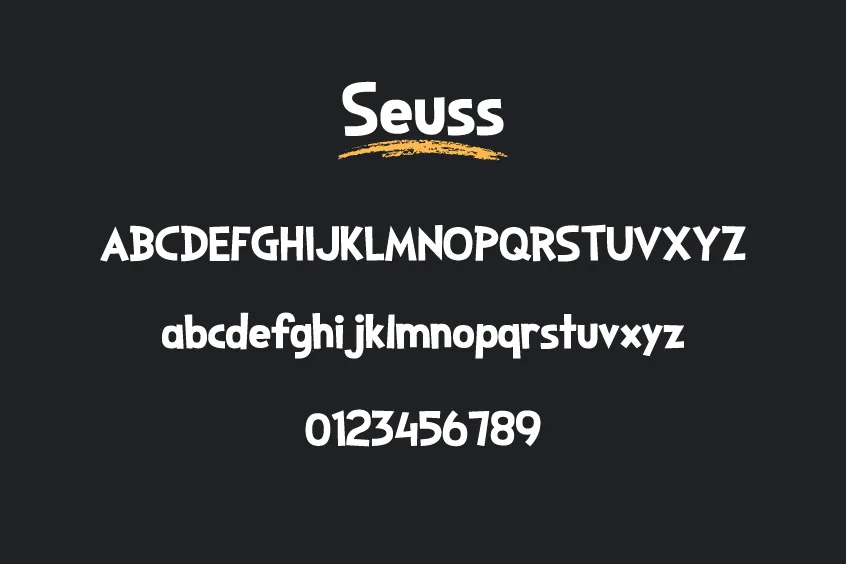
Seuss by Dan P. Lyons, is a comprehensive remaster of Dr Seuss font. This set includes more than 100 glyphs, comprising both uppercase and lowercase characters, numbers, and punctuation marks.
This font is available for both personal and commercial use with no restrictions.
3. Doctor Soos
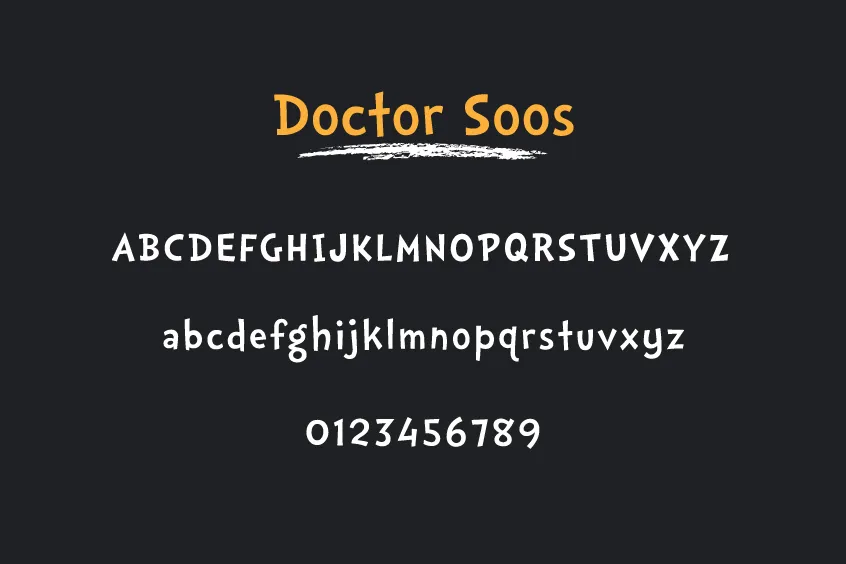
Doctor Soos, a font developed by Sean Trowbridge is an inspiration by Dr Seuss font, it consists of all uppercase and lowercase letters, numbers, punctuation, and some multilingual characters.
This font is available for personal use only. For official usage, kindly contact Dr. Seuss Enterprises at https://www.penguinrandomhouse.com/about-us/contact-us/
4. HoW tO dO SoMeThInG
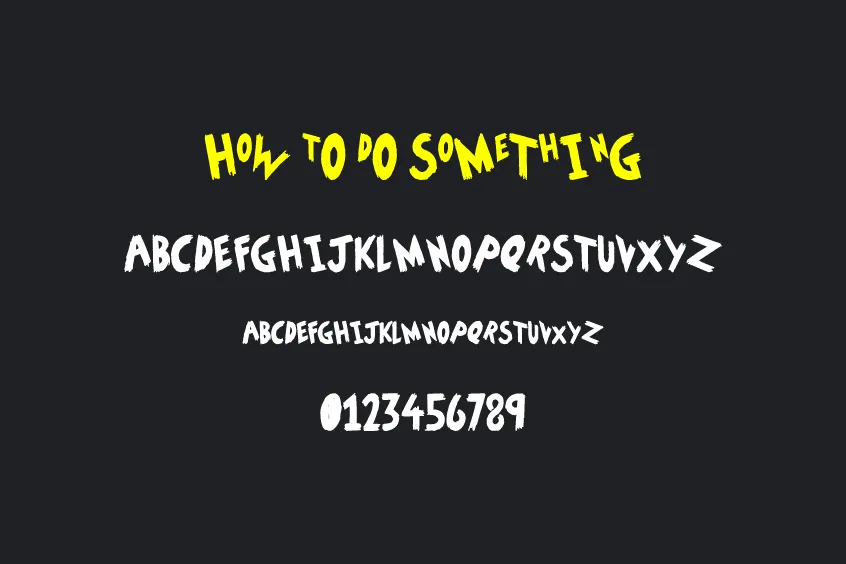
HoW tO dO SoMeThInG by Jonathan S. Harris, comprises over 150 glyphs, inclusive of all uppercase and lowercase letters, numbers, and general punctuation. However, it should be noted that this font can only be used for personal projects. For commercial utilization, a license must be obtained by visiting http://www.tattoowoo.com or contacting the owner at info@tattoowoo.com.
5. Lucyville
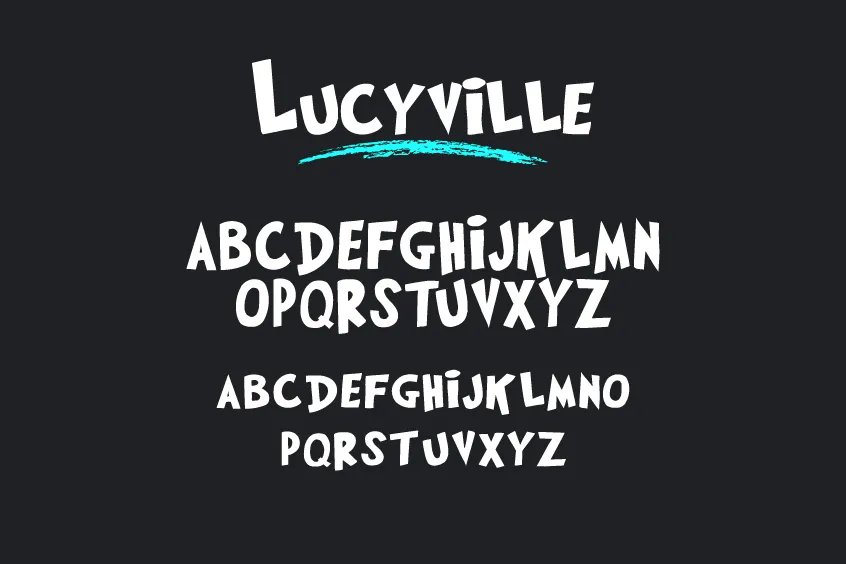
Lucyville, designed by Squaresville, is a font that is perfect for comic book typesetting. It comprises only uppercase and lowercase letters and lacks numbers and some punctuation. It is available for both personal and commercial projects.
6. Oogie Boogie
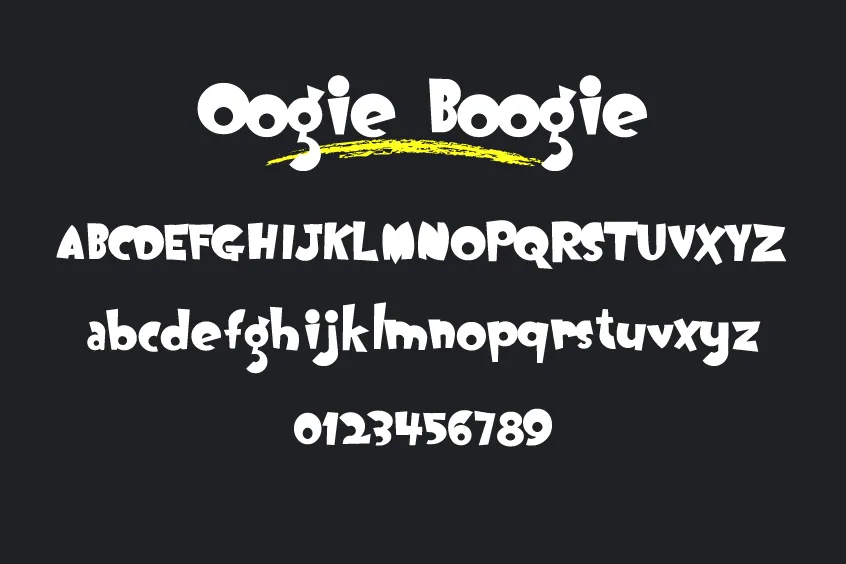
Oogie Boogie, designed by Daniel Gauthier, is a comic lettering style font that contains uppercase and lowercase letters, numbers, symbols, and punctuation. It also supports multilinguals, but it is available for personal projects only. For further queries, kindly contact the owner at: dgauthier@timberspecialties.com
7. Poorhut

Poorhut, designed by Ben Balvanz in 1999, is a font that contains only lowercase letters, numbers, and a limited selection of punctuation marks. It is intended for personal use only, and for further information, please visit the website of the owner at http://www.fontalicious.com/contact/ or contact him.
8. Gabbaland
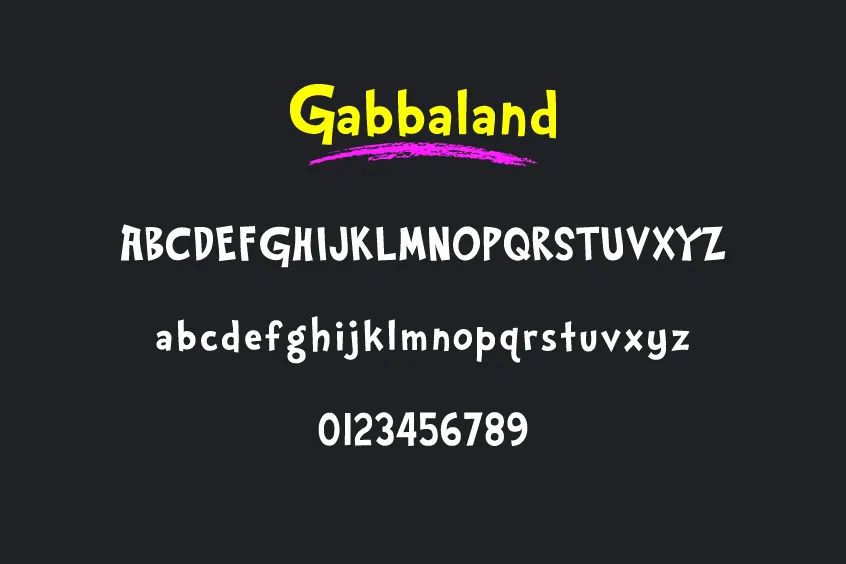
Gabbaland, designed by Sean Trowbridge, is an inspiration from the children’s TV show Yo Gabba Gabba! This font contains uppercase and lowercase characters, numbers, symbols, punctuation, and some alternate characters, and it is only intended for personal projects.
What Font is Dr Seuss Written in?
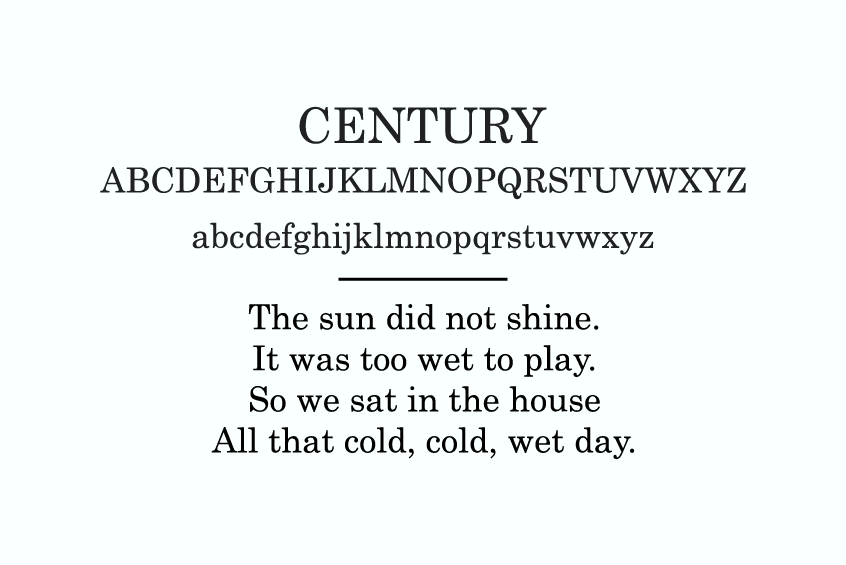
The font Dr. Seuss utilized for his beloved books is known as “Century Schoolbook“, a distinguished serif typeface that can be found within the halls of Microsoft Office such as Word, Excel, and PowerPoint.
If you can’t afford the Century font, there are a lot of free alternatives available. Some options include:
They are completely free and just as good.
Dr Seuss Typography Analysis
Dr. Seuss, whose real name was Theodor Geisel, was a children’s author and illustrator known for his playful use of language and imaginative characters. His books, which include classics like “The Cat in the Hat” and “Green Eggs and Ham,” have sold millions of copies worldwide and have been translated into many languages.
The typography used in Dr. Seuss’s books is a big part of their appeal. His use of distinctive font styles and bold, vibrant colors helps to capture the playful and imaginative spirit of his stories.
One of the most recognizable features of Dr. Seuss’s typography is his use of a distinctive, hand-drawn font that he created himself. This font, which he called “Seussian,” features thick, bold strokes and dynamic, sweeping curves that give it a playful and whimsical feel. This Dr Seuss font is used for the text in the majority of his books.
Another key aspect of Dr. Seuss’s typography is his use of color. He uses bright and bold colors to create visual interest and draw the reader’s eye and also uses colors to help convey the emotions of the story. The colors are often used to indicate the different characters, situations, and themes.
Dr Seuss font also makes use of a variety of font sizes and styles. He often uses large, attention-grabbing headlines to introduce a new section of the story or draw attention to a key phrase or idea. He also makes use of small, fine print for certain text, which helps to create contrast and interest and grab the reader’s attention.
In summary, Dr. Seuss’s typography is an essential part of the appeal of his books. His use of a distinctive, hand-drawn font and bold, vibrant colors, along with his clever use of typographic variations like size and style, helps to capture the playful and imaginative spirit of his stories and make them a joy for both children and adults.
Dr Seuss Font Application
The Dr Seuss font can be used in various areas of the business to add a unique and playful touch to various types of content. Here are a few examples of where you might use a Dr Seuss font:
- Use Dr Seuss font for marketing materials. Make your brochures, flyers, and posters POP by using a wacky Dr Seuss font style to grab the attention of potential customers.
- Add some fun and personality to your brand’s online presence by using a playful Dr Seuss font in your social media posts and graphics.
- Dr Seuss font is great for Branding. Stand out from the crowd and create a unique brand identity with a one-of-a-kind comic font in your logo and brand guidelines.
- Give your product labels and packaging designs a cartoonish flair and make them impossible to miss on store shelves.
- Make your advertisements zany and unforgettable by using a Dr Seuss font in the headlines and message.
- Add a dash of cartoonish charm to your website by using comic lettering in your headings, buttons, and other design elements.
Keep in mind that while a cartoonish style font can be a great way to add some playfulness and interest to your business materials, it’s important to make sure the Dr Seuss font matches your message and audience.
Dr. Seuss Overview
Dr. Seuss, whose real name was Theodore Geisel, was a beloved children’s book author and illustrator. He was born in 1904 in Springfield, Massachusetts, and died in 1991. He began his career as an advertising illustrator before turning to children’s books, and his first children’s book, “And to Think That I Saw It on Mulberry Street,” was published in 1937.
Read more
Dr. Seuss’s books are known for their playful, whimsical rhymes and imaginative illustrations. He wrote over 60 children’s books, many of which have become classics, such as “The Cat in the Hat,” “Green Eggs and Ham,” “How the Grinch Stole Christmas,” and “Oh, the Places You’ll Go!” These books have been translated into multiple languages and have sold hundreds of millions of copies worldwide.
Dr. Seuss’s books often carried important messages and lessons, such as the importance of environmental conservation (“The Lorax”), the dangers of prejudice and racism (“Horton Hears a Who!”), and the value of individuality and self-expression (“I Am Not Going to Get Up Today!”). He also wrote a number of books under various pen names.
Dr. Seuss’s books were not only popular with children but also with adults, who appreciate the wit and clever wordplay in his stories. His books are known for their memorable characters, catchy rhymes, and imaginative illustrations, which have become iconic and easily recognizable. His legacy has had a lasting impact on children’s literature, and his books continue to be read and enjoyed by generations of children and adults.
Additionally, Dr. Seuss’s books have been adapted into movies, television shows, and stage productions. Some of these adaptations have been widely successful and also have become popular among audiences. Many of Dr. Seuss’s books have been adapted into animations as well.
In conclusion, Dr. Seuss’s books have had a lasting impact on children’s literature, both in their content and in the way they are illustrated. His stories continue to delight and inspire readers of all ages, and his legacy continues to influence children’s literature to this day.
Final Reflections
Ladies and gentlemen, it is with great verve and panache that we remind you of the importance of font licensing. Using fonts without the proper permissions can be a criminal offense, akin to grand larceny, leaving you to face the music in a court of law. So, before you unleash your typographical creativity, ensure that you have the necessary rights to use the font in question.
We hope that you have found this article to be a font of knowledge (pun intended), and encourage you to peruse other informative pieces such as the CoComelon, Rugrats, Peppa Pig, or Hey Duggee. These articles may just prove to be a treasure trove of useful information.
As we journey through this presentation, please don’t hesitate to let your inquisitive nature run wild and ask any questions that may pop into your mind. We promise to do our utmost to provide insightful and accurate responses. And if you ever have the desire to reach out, you can find us at https://fontswan.com/contact/ where we’ll be more than happy to assist you.
